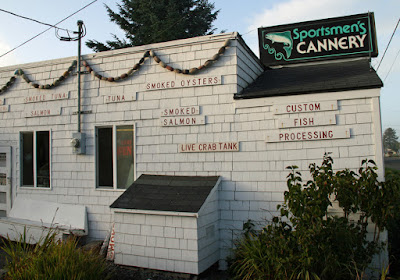 |
| Not all clam digs are a night. It depends on the tides. Here we are readying our lanterns for the hunt. |
I've always wondered what it would be like to dig my own
clams. I've photographed the clam diggers at sunset and enjoyed the fruits of
their labor in seafood restaurants.
Digging in the sand for razor clams is a seasonal sport
usually taking place in fall and winter. You'll see whole families outfitted
with rubber boots, clam guns (a digging tube) and buckets. The Washington
Department of Fish and Wildlife determines when and where you can dig for
clams.
This year's schedule can be
found on the WDFW
website. Be sure to check with WDFW for the
latest regulatory requirements for clam digging. During the fall and winter
when low tides occur at night, thousands of clam diggers brave the elements to
dig by lantern or flash light. It's a beautiful sight.
As first-timers we checked the schedule and found out that
our dig would have to take place in the dark, after dinner. We had come
prepared with boots and layered clothing. It was windy out on the beach and
high surfs were predicted.
We went to The Dennis Company
in central Long Beach to purchase the necessary license ($8.00) and a couple of
clam guns (tubular digging devices). It's a great place for boots, heavy socks
and fishing gear, too. The clerk at checkout, knowing we were novices, quipped,
"You'll need bullets for those clam guns!"
We were all set. Since it was just before sundown, we loaded
the car and headed for one of the favorite dining spots on the Long Beach
Peninsula, The Depot
Restaurant. It was not only clamming season, it was mushroom season,
so we were treated to some of Chef Michael's mushroom dishes during our dinner.
Warmed by The Depot Restaurant's private label red wine and fortified with a
chocolate delight for dessert, we headed for the van.
The Depot is conveniently located near the Seaside beach
access so we drove down the street and on to the beach (yes, you can drive on
the beach on the Longview Peninsula.) Lanterns were lighted, and we donned our
gum boots. With clam guns over our shoulders, we marched down to the water's
edge, looking for holes or "dimples" in the wet sand. The razor clams
burrow into the sand but leave these tell-tale signs on the surface.
Some dig with shovels but we opted for the tubular digging
device. Digging takes some degree of knowledge and strength. Once we located
the "show," we faced the ocean and centered the tube over the hole.
Slanting the tube slightly toward the ocean, we pushed it into the sand using
twisting motions.
We got the tube down as far as possible and then withdrew
it, keeping our finger on the hole in the top to create suction. We then
pulled up using our leg muscles as much as possible to avoid hurting our backs.
When the tube was pulled out, we released our fingers from the air hole on the
tube and checked the sand that was dumped out.
If the clam was not in that sand, we quickly returned to the
hole to dig further. Usually by the second dig, we'd find the razor clam in the
sand. They run 3 to 6 inches so they are easy to spot, even at night.
 |
| They aren't all that pretty but Razor Clams are the centerpiece of many a local meal. Here is #1 of the 15 we were permitted to take. |
The limit is 15 clams so you have to take the first 15 you
dig. Sometimes that takes awhile. As we found, when the surf quieted a bit, the
little holes and sand mounds seemed to pop up out of nowhere. By the end of our
evening on the windy beach we all had our limit and headed back to the van
which we parked on the beach. Those who did the most digging felt they had a
great workout. It takes a bit of muscle for the job.
So what does one do with the clams after digging them?
Fortunately there are places that process shellfish for you. They'll vacuum
pack or can the cleaned clams so they will be ready for your clam chowder or
clam pasta sauce once you return home. We took our clams to Sportsmen's Cannery
right on the main road in Seaview and they took care of the cleaning and
packaging for us.
 |
| Sportsmen's Cannery, just down the road, will take care of your catch for you. |
After a windy and fun evening on the beach you might want to
have a nightcap and warm up. I suggest Pickled Fish
at the Adrift Hotel. They are open until 10 or 11 p.m. and have live music most
nights. It's a casual place too so you are welcome there in your jeans and clam
digging sweaters.
Clam digging is an experience you and your whole family will
enjoy. It's a must-do during fall and winter season when you are visiting the
Long Beach Peninsula.
No comments:
Post a Comment